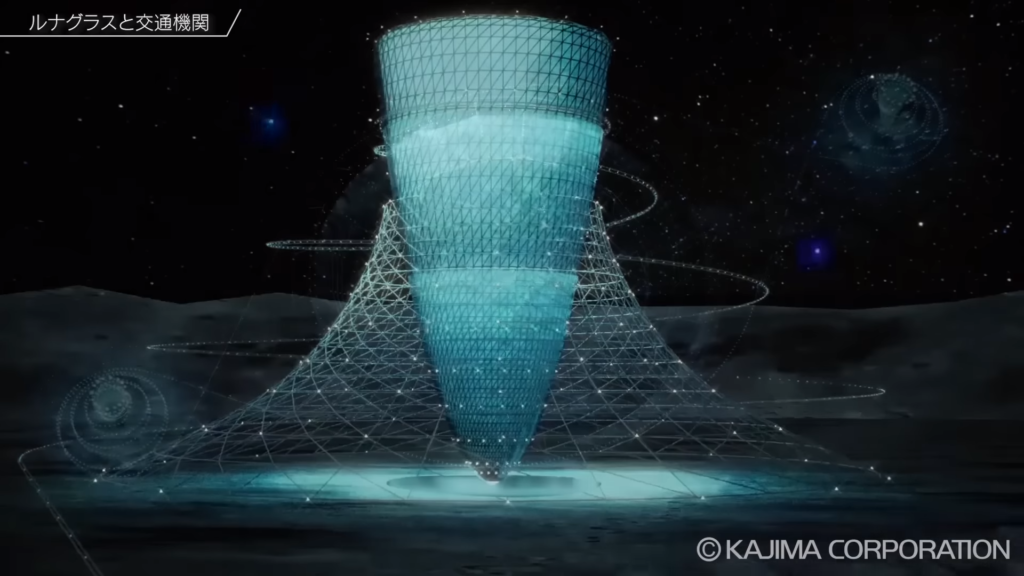Japan’s Kyoto University unleash futuristic plans of constructing an Artificial Gravity Building on Moon & Mars, Bullet Train facility between the gravity buildings envisioning future of space.
Japan besides possessing a dozen UNESCO World Heritage sites, and being a home for people who live the longest life in the world, is also in race of technology & development. The country’s educational-ranking in the world for the past decade itself explains its potential in brief.
Latest in the last week, Researchers of Kyoto University in collaboration with Kajima Construction revealed their futuristic plans to develop the ‘Glass Habitat’, a building made of Glass for humans to live that replicates Earth’s gravity & terrain, and a ‘Bullet Train’ that connects the Glass structures within the planet & with other planets too.
As Scientists perpetually probing the ways for a practical space-colonization and planets suitable for life, researches on space & exploration of space have seen an exponential growth in the past years than ever. Innovations like space-travel, space-manufacturing and space-buildings insights a strong belief in people’s mind that reaching out to space for a living is not too far to experience.
Albeit, the foremost constraining part of spending time in space is zero or low gravity which has its own ill-effects on human body. What’s the use of looking for a habitat, if chances of living for long years is less? This view’s upshot happens to be the artificial gravity building – the Glass.
What happens to Human body in Space?
Human body that has a frequent exposure to zero or low gravity impacts a decline of 1% – 1.5% of mineral density (per month) in bones and also lose muscle mass n microgravity faster than on earth, according to NASA.
The softening or weakening of the bones and muscles in space could be worse for children. In fact, researchers proclaim that space-born children may not be able to stand on their own when they return to earth.
Moreover, microgravity causes fluids in the body to shift upward to the head, putting pressure on the eyes and leading to vision problems. People living in space are prone to affected by kidney stones at a higher risk than who live on earth.
Artificial-Gravity Building on Moon & Mars – The Glass
With the advent of Glass building enclosed by gravity of earth, days are not far to experience life in other planets. Calling it as ‘The Glass’, Kyoto University and Kajima Construction aims for a conical living structure of artificial gravity, incorporating public transportation, green areas, and water bodies like rivers, resembling what life on Earth be like.
The structure, as per the researchers’ illustration, is an inverted cone that rotates at frequency of 20 seconds to create a centrifugal pull mimicking the effect of Earth’s actual gravity. By 2050, the team hopes to build a simplified prototype version, which shows off at 1,300 feet height and with a radius of 328 feet. The model creates 1G gravity at the place with largest radius.
Don’t Forget to Check out this: Underwater Cities in Future – Ocean Spiral
Researchers proposed two buildings of the kind, one on the moon and another on Mars. While the moon’s habitat be called ‘Lunaglass’, Mars’ will get ‘Marsglass’. Elements from the Earth’s terrain and ecosystem will be extracted to be fed into the core biome complex, a multi-disciplinary field of geology, biology, botany, various physics, engineering and climatology.
Bullet Train in Moon & Mars – Space Express
Japanese team not stopped in there with ‘The Glass’. The bullet train-like concept of them seems to be like science fiction seen in Christopher Nolan movies. The transportation system clinging along with The Glass intends to provide interplanetary travel in its ‘Hexatrack’, hexagonal shaped capsules containing moving pods in them, likely as hyperloop’s pods.
Hexacapsules carrying the passengers, floats along the track infusing electromagnetic technology, like in Maglev trains of Germany and China. The team envisions to maintain a 1G gravity along the travel.
The trailing pods will have rocket boosters hinged to them to accelerate and decelerate in space while also serves to escape the gravitational pull of each planet. At times of travelling on planets’ atmosphere, the train has its own wings that unfolds to leverage the aerodynamics of the atmosphere.
Related Posts
There will be two kind of capsules – the smaller mini-capsule of radius 15 meters shuttling between the Earth and Moon and a large capsule of radius 30 meters driving across Earth, Mars and Moon. They call these ‘Space Express’ and the station on earth is dubbed ‘Terra Station’.
“Through discussions over the past few years, these three pillars that we propose this time are core technologies that are not in the development plans of other countries and are indispensable for ensuring the realization of human space colonization in the future,” Yosuke Yamashiki, the Director of SIC Manned Cosmology Research Center and Graduate School of Advanced Integrated Studies at Kyoto University, briefed.
According to the Kyoto University’s researchers, the actual working version of the proposal could be implemented in the latter half of this century.
Would you think mankind be able to achieve this within this century? Comment your thoughts…
(For more such interesting informational, technology and innovation stuffs, keep reading The Inner Detail).

